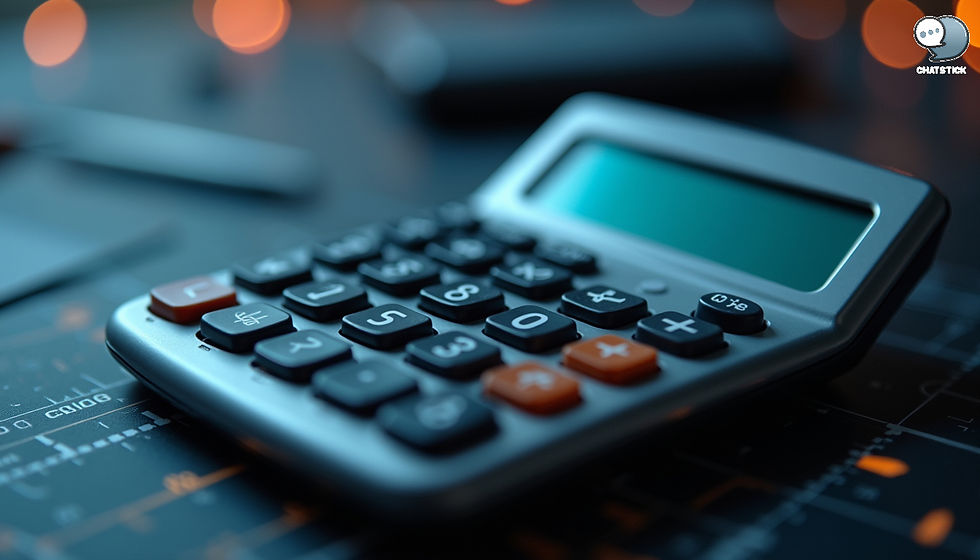Mastering GRE Quant: Essential Shortcuts to Boost Your Score
- ChatVariety

- 5 days ago
- 4 min read
Preparing for the GRE can seem overwhelming, especially the quantitative section. Many students feel anxious about the wide range of math concepts and the tight time limits of the exam. However, learning a few effective shortcuts can dramatically improve your performance and build your confidence. In this blog post, we will explore essential GRE Quant shortcuts to ensure you are ready for test day.
Understanding the GRE Quantitative Section
The GRE Quantitative section tests your math skills, including arithmetic, algebra, geometry, and data analysis. It consists of two parts, each with 20 questions that must be completed in 35 minutes. That breaks down to just under two minutes per question, making time management essential. Knowing a few shortcuts can help you save those crucial seconds on each problem.
The Importance of Shortcuts
Shortcuts do more than just save time; they also allow for a more efficient approach to problem-solving. By using shortcuts, you can simplify complex calculations, make educated guesses, and quickly eliminate incorrect answer choices. For example, students who use shortcuts effectively can reduce their time spent on questions by up to 30%. This strategic approach often results in higher scores and a more positive testing experience.
Essential GRE Quant Shortcuts
1. Estimation Techniques
One key skill in the GRE Quant section is the ability to estimate. For example, if you need to calculate 198 × 47, you can round those numbers to 200 and 50. This simplifies the calculation:
200 × 50 = 10,000.
This quick estimation helps you evaluate answer choices faster, ensuring you stay within your time limit.
2. The Rule of 72
The Rule of 72 provides a quick way to estimate how long it will take for an investment to double at a fixed annual interest rate. Simply divide 72 by the interest rate. For instance, if the interest rate is 8%, it will take approximately 72 / 8 = 9 years for the investment to double. This tactic can be especially useful in data interpretation questions dealing with growth rates.
3. The 1.5 Rule for Triangles
In geometry, knowing how to quickly find the area of a triangle is helpful. The standard formula is:
Area = 1/2 × base × height.
However, if you have all three side lengths, consider using the 1.5 rule: the area is about 1.5 times the shortest side length times the height from that side. If the shortest side is 6, and the height is 8, you can calculate:
Area ≈ 1.5 × 6 × 8 = 72.
This approach can save time during multiple-choice questions.
4. Quick Percent Calculations
Percentage questions can be tricky but can be simplified with shortcuts. To find 15% of a number, first determine 10% (by dividing by 10), then add half of that value. For example, to calculate 15% of 200:
10% = 20;
15% = 20 + (20 / 2) = 20 + 10 = 30.
This method is beneficial for questions involving discounts or increases.
5. Algebraic Manipulations
Manipulating equations helps you solve problems faster. For instance, consider the equation 3x + 5 = 20; you can isolate x quickly by subtracting 5 and then dividing by 3:
3x = 15;
x = 15 / 3;
x = 5.
This approach streamlines your problem-solving process.
6. Visualizing Problems
Many GRE Quant questions can be easier to solve by visualizing the problem. For word problems that involve rates, distances, or time, drawing a simple diagram can clarify the relationships among different elements. This technique minimizes errors and can save valuable time.
7. Using the Process of Elimination
In multiple-choice questions, using the process of elimination is an effective tool. Start by discarding obviously incorrect answers. This strategy not only boosts your chances of selecting the correct answer but also helps you narrow down your options even if you're unsure, resulting in a more educated guess.
8. Memorizing Key Formulas
While the GRE provides certain formulas, being familiar with key mathematical concepts can save you time. Create a list of essential formulas—including the Pythagorean theorem, area and volume formulas, and basic statistics—so you can recall them quickly during the test. For example, knowing the area formula for circles (Area = πr²) will save you time when calculating.

9. Practice with Timed Drills
Practicing these shortcuts is vital. When you set a timer to work through practice questions, focus on applying the shortcuts you've learned. This will improve both your speed and accuracy. Research shows that students who practice timed drills see score increases of around 15%.
10. Review and Reflect
Once you finish practice tests, take the time to review your answers. Identify which shortcuts worked well and which need refinement. Analyzing your performance will help you adjust your strategies and enhance your overall test-taking skills.
Final Thoughts
Mastering the GRE Quant section requires a blend of knowledge, practice, and effective strategies. By integrating these essential shortcuts into your study routine, you can sharpen your problem-solving skills and boost your confidence on test day. Remember, success isn't just about hard work; it’s about working smart. With the right techniques, you can navigate the GRE Quant section effortlessly and achieve the score you aim for.

As you prepare for the GRE, keep these shortcuts in mind and practice them regularly. With dedication and the right strategies, you can master the GRE Quant section and make significant strides toward achieving your academic goals. Good luck!






Comments